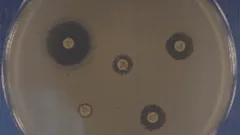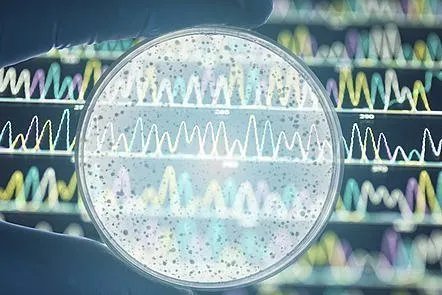
Antimicrobial resistance - theory and methods 
This course provides an in-depth look into antimicrobial resistance, from basic definitions and overviews to the emergence and spread of resistance. It covers topics such as how bacteria become resistant, methods for antimicrobial susceptibility testing, and how to use genomic analysis tools to detect resistance genes. After completing the course, participants will be able to describe the most important families of antimicrobials, understand the basic concepts of antimicrobial resistance, enumerate and describe how bacteria can become resistant, and more. This course is perfect for anyone looking to gain a comprehensive understanding of antimicrobial resistance. ▼
ADVERTISEMENT
Course Feature
![]() Cost:
Cost:
Free
![]() Provider:
Provider:
Coursera
![]() Certificate:
Certificate:
Paid Certification
![]() Language:
Language:
English
![]() Start Date:
Start Date:
31st Jul, 2023
Course Overview
❗The content presented here is sourced directly from Coursera platform. For comprehensive course details, including enrollment information, simply click on the 'Go to class' link on our website.
Updated in [August 18th, 2023]
Skills and Knowledge:
This course will provide students with the skills and knowledge to understand the concepts of antimicrobial resistance, the emergence and spread of resistance, and the mechanisms bacteria use to become resistant. Students will also learn about antimicrobial susceptibility testing (AST) methods, including dilution and diffusion methods, and how to interpret the results. Additionally, students will gain an understanding of quality management and quality assurance method standardization, applied to AST. Furthermore, students will learn how to relate phenotypical results with results from genotyping using molecular techniques for detection of resistance mechanisms, and how to apply genomic analysis tools used to detect resistance genes and other relevant genes from Whole Genome Sequencing (WGS) data.
Professional Growth:
This course contributes to professional growth by providing a comprehensive overview of antimicrobial resistance, including definitions, overviews, and methods for antimicrobial susceptibility testing. It also provides training in methods for detecting specific resistance in microbiological laboratories, as well as instruction on how to use genomic analysis tools to analyze whole genome sequencing data to detect resistance genes. Additionally, the course covers topics related to the emergence and spread of resistance, and how bacteria become resistant and which mechanisms they might use for this. After completing the course, participants should have a detailed understanding of antimicrobial resistance and the methods used to detect it.
Further Education:
This course is suitable for preparing further education as it covers topics related to antimicrobial resistance, including basic definitions and overviews on antimicrobials, their use, and the emergence and spread of resistance. It also provides training in methods for antimicrobial susceptibility testing (AST) and detection of specific resistance in microbiological laboratories, as well as genomic analysis tools to analyze whole genome sequencing data to detect resistance genes. After completing the course, students should be able to understand the importance of antimicrobial resistance, the mechanisms of resistance, and the methods used for AST. They should also be able to relate the information obtained in the course to real cases of resistant bacteria spreading, and understand the concept and be able to apply genomic analysis tools used to detect resistance genes.
Course Provider

Provider Coursera's Stats at AZClass
Discussion and Reviews
0.0 (Based on 0 reviews)
Explore Similar Online Courses

2019 YouTube Marketing & YouTube SEO To Get 1000000+ Views

The People Power and Pride of Public Health

Python for Informatics: Exploring Information

Social Network Analysis

Introduction to Systematic Review and Meta-Analysis

The Analytics Edge

DCO042 - Python For Informatics

Causal Diagrams: Draw Your Assumptions Before Your Conclusions

Whole genome sequencing of bacterial genomes - tools and applications

Bacterial Genomes: Disease Outbreaks and Antimicrobial Resistance

Antimicrobial Stewardship in Veterinary Practice


Start your review of Antimicrobial resistance - theory and methods